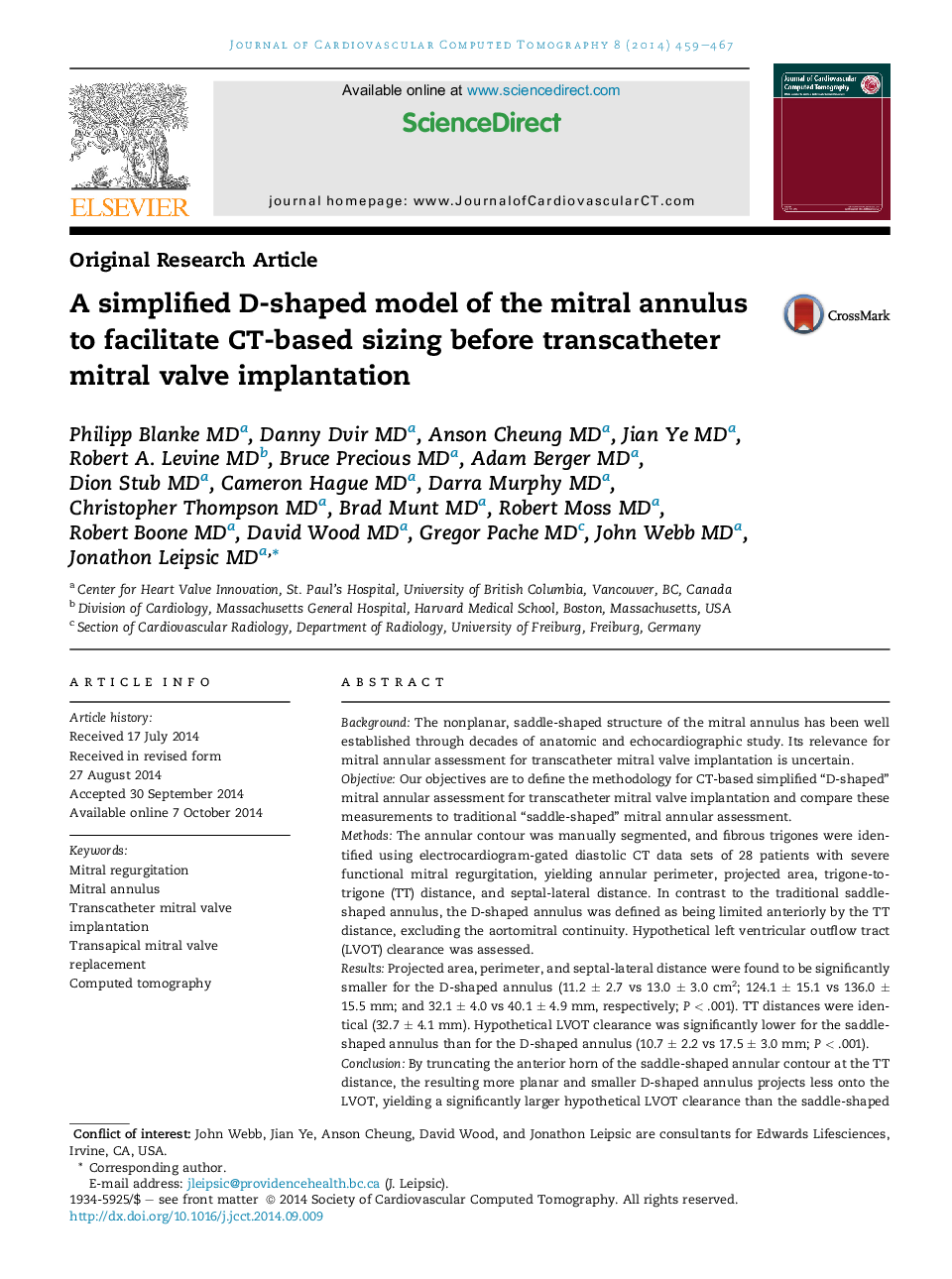| Article ID | Journal | Published Year | Pages | File Type |
|---|---|---|---|---|
| 5985059 | Journal of Cardiovascular Computed Tomography | 2014 | 9 Pages |
â¢Anatomic and echocardiography studies have suggested that the mitral annulus is a nonplanar, saddle-shaped, 3-dimensional structure with the peaks of the saddle formed by distinct anatomic landmarks.â¢The historically proven and anatomically accurate saddle-shaped annulus appears inappropriate for transcatheter mitral valve implantation sizing as its projected area extends far into the left ventricular outflow tract.â¢The concept of a D-shaped annulus excluding the anterior peak and aortomitral continuity with an anterior border defined by the trigone-to-trigone distances is important for device selection to mitigate the risk of left ventricular outflow tract obstruction.â¢CT-based mitral annular assessment may aid preprocedural sizing, ensuring appropriate patient and device selection.
BackgroundThe nonplanar, saddle-shaped structure of the mitral annulus has been well established through decades of anatomic and echocardiographic study. Its relevance for mitral annular assessment for transcatheter mitral valve implantation is uncertain.ObjectiveOur objectives are to define the methodology for CT-based simplified “D-shaped” mitral annular assessment for transcatheter mitral valve implantation and compare these measurements to traditional “saddle-shaped” mitral annular assessment.MethodsThe annular contour was manually segmented, and fibrous trigones were identified using electrocardiogram-gated diastolic CT data sets of 28 patients with severe functional mitral regurgitation, yielding annular perimeter, projected area, trigone-to-trigone (TT) distance, and septal-lateral distance. In contrast to the traditional saddle-shaped annulus, the D-shaped annulus was defined as being limited anteriorly by the TT distance, excluding the aortomitral continuity. Hypothetical left ventricular outflow tract (LVOT) clearance was assessed.ResultsProjected area, perimeter, and septal-lateral distance were found to be significantly smaller for the D-shaped annulus (11.2 ± 2.7 vs 13.0 ± 3.0 cm2; 124.1 ± 15.1 vs 136.0 ± 15.5 mm; and 32.1 ± 4.0 vs 40.1 ± 4.9 mm, respectively; P < .001). TT distances were identical (32.7 ± 4.1 mm). Hypothetical LVOT clearance was significantly lower for the saddle-shaped annulus than for the D-shaped annulus (10.7 ± 2.2 vs 17.5 ± 3.0 mm; P < .001).ConclusionBy truncating the anterior horn of the saddle-shaped annular contour at the TT distance, the resulting more planar and smaller D-shaped annulus projects less onto the LVOT, yielding a significantly larger hypothetical LVOT clearance than the saddle-shaped approach. CT-based mitral annular assessment may aid preprocedural sizing, ensuring appropriate patient and device selection.
